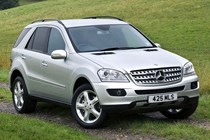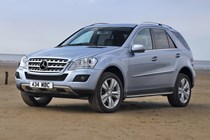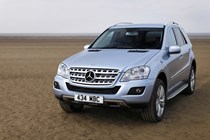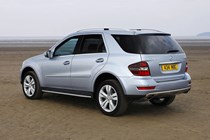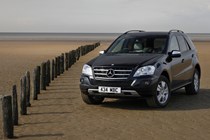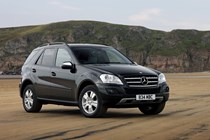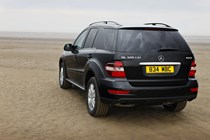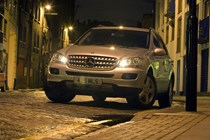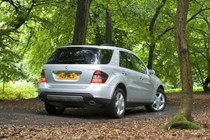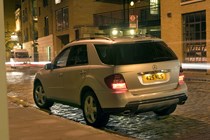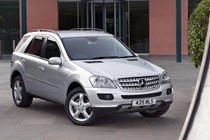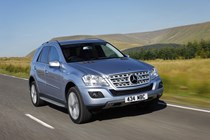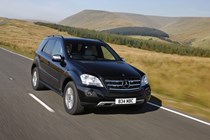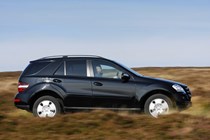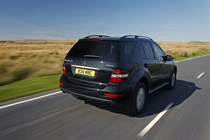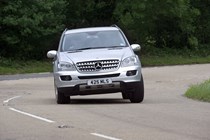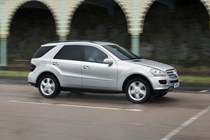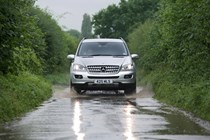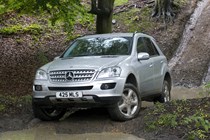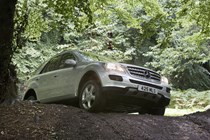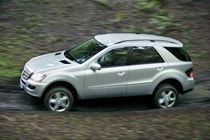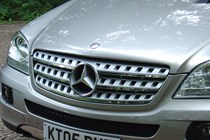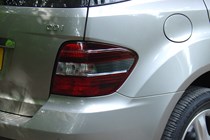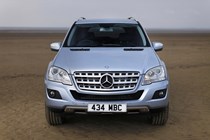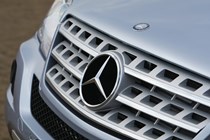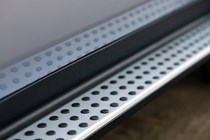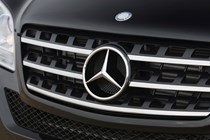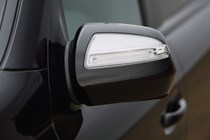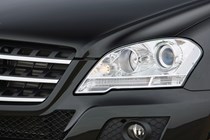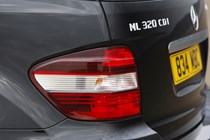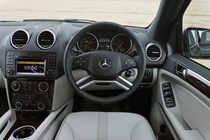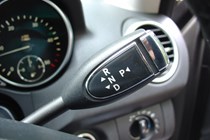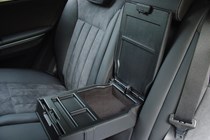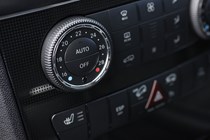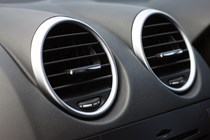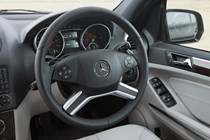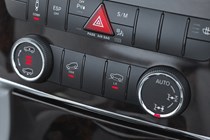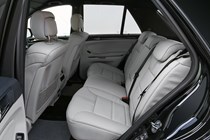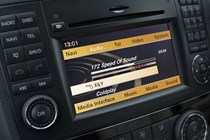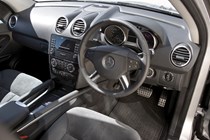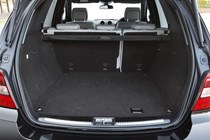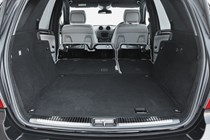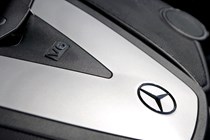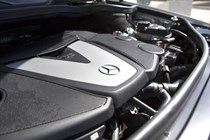
Mercedes-Benz M-Class Hatchback (2005-2011) engines, drive and performance
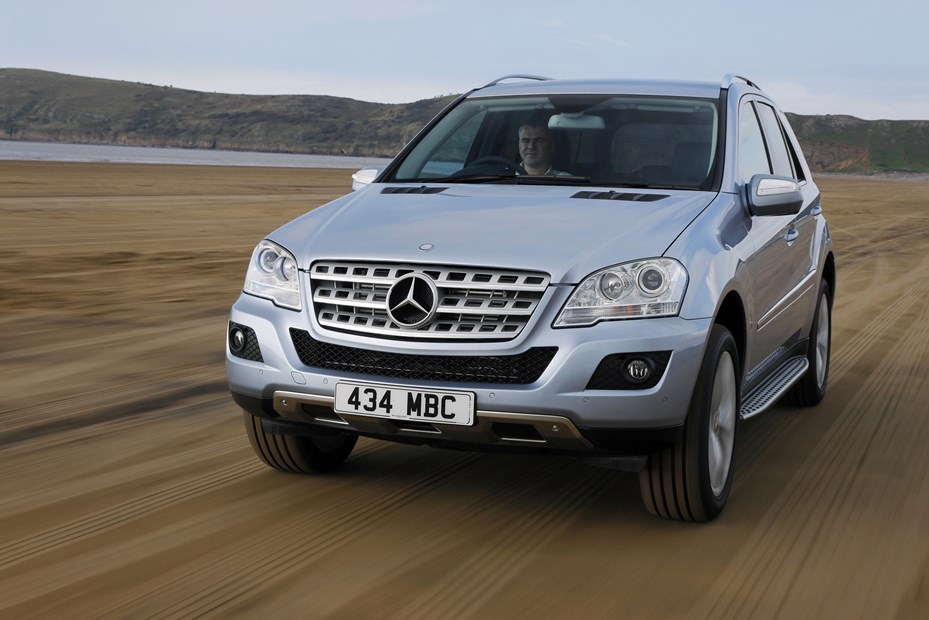
Buyers can choose from 3.5-litre (ML350) and 5.0-litre (ML500) petrols or a 3.0 V6 diesel (ML280CDI and ML320 CDI). With 270bhp on offer and a 0-62mph time of 8.4 seconds (pretty good for a car that weighs just over two tonnes), the ML350 offers enough power and performance for most buyers. For the first 18 months of production of the second-generation M-Class, the ML500 used a 306bhp 5.0-litre V8.
Although it has the sort of pace you’d normally associate with a fast saloon, getting to 60mph in 6.7 seconds and onto a top speed of 146mph, it was made rather redundant by the ML420 CDI launched a year later. The V8 diesel ML also boasts 306bhp and covers the 0-62mph sprint almost as quickly as the ML500, but is more economical. However, from May 2007 the ML500 was upgraded to Mercedes-Benz’s newer 388bhp V8 petrol engine, offering an on-paper performance advantage over the 420 CDI.
The 224bhp ML320 CDI diesel is no slouch, either. This new V6 is quick, powerful and capable of getting to 62mph in 8.6 seconds. The same engine is used in the 280 CDI but power is decreased to 190bhp and the 0-62mph drops to 9.8 seconds. It has plenty of grunt for overtaking although there are no benefits in terms of economy – like the 320 CDI model it returns 29mpg.
It’s in this area that the M-Class has improved the most – both on and off-road. On motorways it cruises comfortably and there’s enough power from all engines for easy overtaking. Its sharp steering, responsive brakes and excellent body control means that it can make quick progress on B-roads, although the 2007 BMW X5 manages to raise the bar even higher.
The ML’s turning circle is quite tight for a large 4x4, which makes town driving easy. Its off-road ability is surprisingly good and it should be able to tackle everything that an average buyer can throw at it. It’s user-friendly to use too – electronics deal with slipping wheels, lack of traction and descending hills, so it’s difficult to go wrong.
There is an off-road ‘Pro-Pack’ available, but at more than £1000, you need to be a serious off-roader to see the benefits.


